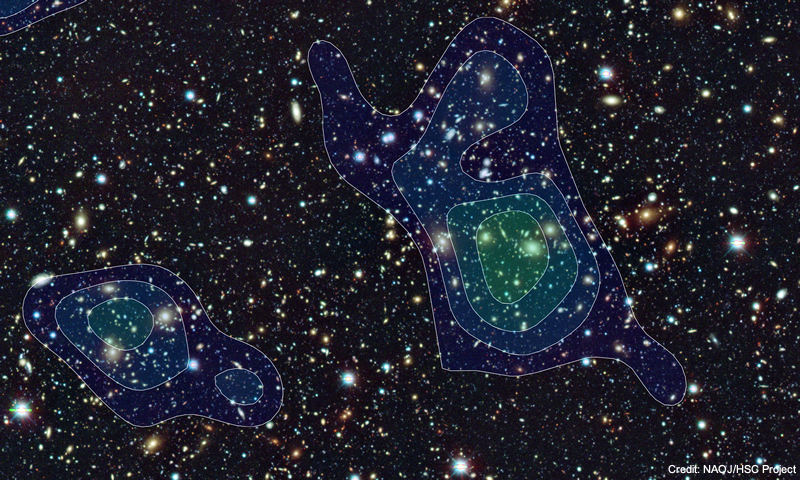Dark Matter Map Begins to Reveal the Universe’s Early History
| Science
Researchers from the National Astronomical Observatory of Japan (NAOJ), the University of Tokyo and other institutions have begun a wide-area survey of the distribution of dark matter in the universe using Hyper Suprime-Cam, a new wide-field camera installed on the Subaru Telescope in Hawai'i. Initial results from observations covering an area of 2.3 square degrees on the sky toward the constellation Cancer revealed nine large concentrations of dark matter, each the mass of a galaxy cluster. Surveying how dark matter is distributed and how the distribution changes over time is essential to understanding the role of dark energy that controls the expansion of the universe. These first results demonstrate that astronomers now have the techniques and tools to understand dark energy. The next step is for the research team to expand the survey to cover a thousand square degrees on the sky, and thereby unravel the mystery of dark energy and the expansion of the universe.

These are the first scientific results from Hyper Suprime-Cam and were accepted for publication in the July 1, 2015 edition of the Astrophysical Journal. (Miyazaki et al. 2015, ApJ 807, 22, “Properties of Weak Lensing Clusters Detected on Hyper Suprime-Cam 2.3 Square Degree Field”.)